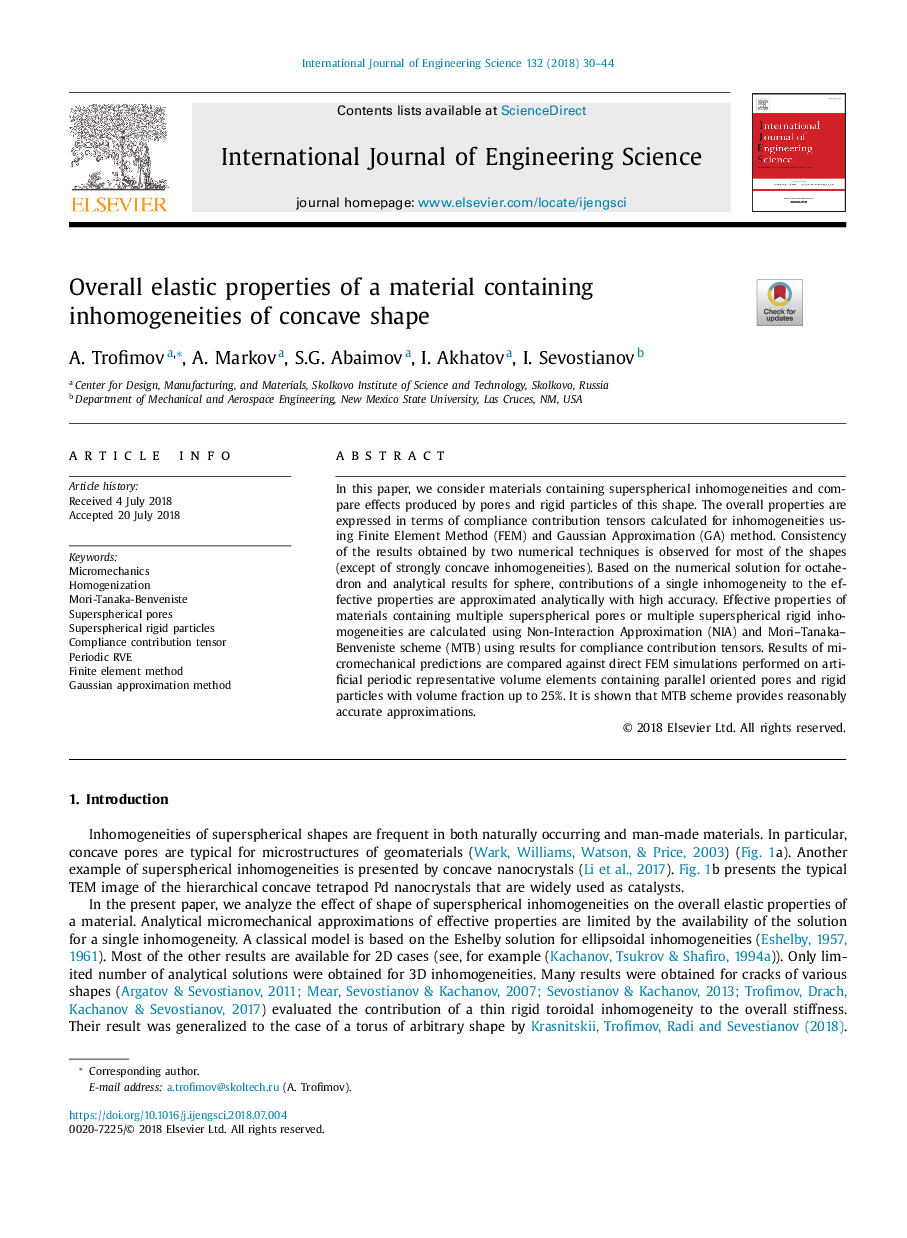| Article ID | Journal | Published Year | Pages | File Type |
|---|---|---|---|---|
| 7216222 | International Journal of Engineering Science | 2018 | 15 Pages |
Abstract
In this paper, we consider materials containing superspherical inhomogeneities and compare effects produced by pores and rigid particles of this shape. The overall properties are expressed in terms of compliance contribution tensors calculated for inhomogeneities using Finite Element Method (FEM) and Gaussian Approximation (GA) method. Consistency of the results obtained by two numerical techniques is observed for most of the shapes (except of strongly concave inhomogeneities). Based on the numerical solution for octahedron and analytical results for sphere, contributions of a single inhomogeneity to the effective properties are approximated analytically with high accuracy. Effective properties of materials containing multiple superspherical pores or multiple superspherical rigid inhomogeneities are calculated using Non-Interaction Approximation (NIA) and Mori-Tanaka-Benveniste scheme (MTB) using results for compliance contribution tensors. Results of micromechanical predictions are compared against direct FEM simulations performed on artificial periodic representative volume elements containing parallel oriented pores and rigid particles with volume fraction up to 25%. It is shown that MTB scheme provides reasonably accurate approximations.
Related Topics
Physical Sciences and Engineering
Engineering
Engineering (General)
Authors
A. Trofimov, A. Markov, S.G. Abaimov, I. Akhatov, I. Sevostianov,
